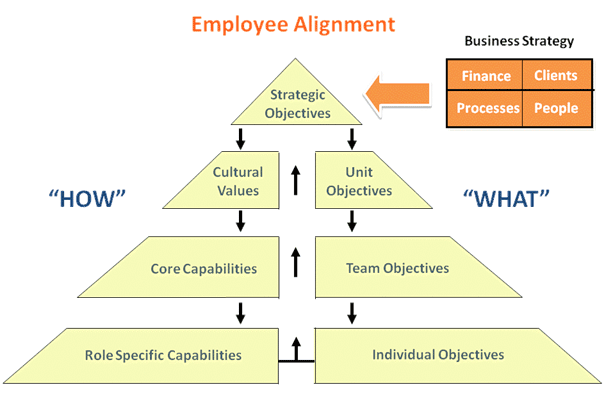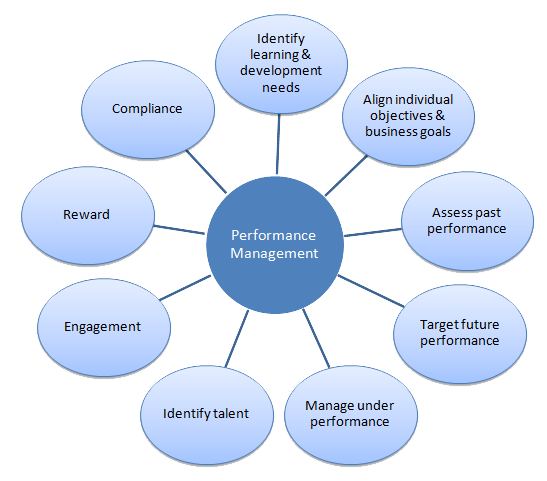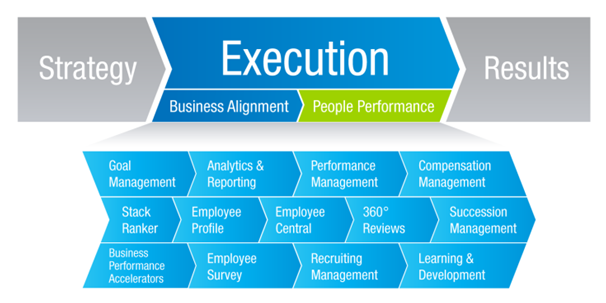Performance Management (PM) is essential for business, organizational and professional success. PM has many interlinked facets, ranging from business planning and control, using e.g. Balanced Scorecard (BSC) to Process Management to People Management (what is misleadingly, in our view, frequently called Human Resource Management, with the very narrow meaning of Personnel Administration). People Management is, in our view, one of the fundamental duties of Line Management - from cascading the corporate BSC down to individuals and from setting SMART targets to continuous performance appraisal and coaching.

In this Newsletter, we’ll touch upon People Performance Management (PPM).
The modern organization needs to manage the performance and the development of all people in the organisation.
People performance management (PPM) is about setting the performance standards, monitoring the progress, developing people competences and competencies, building strong succession plans and ensuring optimal placements and promotions.
It is one of the fundamental echelons of executing the corporate mission and realizing the corporate vision. The other echelons being Culture Management, Process Management and executing the Business Plans and Strategic Projects.
PPM provides the structured and formal feedback between managers and their people –in all possible directions. PPM enables motivating employees and giving a direction to the development of the organization. PPM enables the alignment of the goals and tasks of executives, managers and operatives –and even of suppliers and other partners in an extended-value chain sense- with the business mission and vision-dictated strategy.
The Personnel Department is one of the major players in the development of an effective Performance Management System (PMS) in the organization –together with the departments responsible for process management and process automation.
An organization uses the PMS to achieve the same direction at all levels of the organization in a top-down approach. The top management sets the overall targets and defines the strategic projects and initiatives, as well as the desired steps to be taken in the near-term.
Among other goals, the PMS focuses on the development of the key talents, top performers and successors. The process identifies the best potentials in the organization and it differentiates them from the rest of the population. These are the people who can raise the bar through innovation – by conceiving and/or developing new/improved services/products and/or processes.
The performance management system must be well connected with other human resource management processes such as Compensation and Benefits, Talent Management, Training and Personal Development and Placement.
The PM assessment must be integrated in
- the day-to-day line management,
- the setting and periodical review of actual results,
- the revision of plans and
- the feedback given both by the subordinates to the managers and vice-versa.

It must be assisted by dealing in real time with critical incidents and keeping records of them –both for extra-ordinary as well as for unsatisfactory actual results and behaviour.
- Goal Setting Process
- Personal Development Plan
- Interim Performance Appraisal
- Performance Appraisal
- Talent Management
- Succession Planning and
- Placements and Promotions
The role of the Personnel Department is to make the process transparent, clear and consistent across the organization. The results of the assessment need to be comparable since the outputs are used in other Personnel Administration processes, as mentioned earlier. Top management will not adopt Personnel Department proposals, if they do not trust the fairness and transparency of the performance appraisal process. It must also make the process as easy as possible. It must focus on collecting the most valuable information.
The effectiveness of the PMS relies on setting clear and challenging goals (SMART targets) and depends on a regular evaluation of progress. The system must push managers and operatives to cooperate in achieving their targets - with alignment and engagement in a Stage 4 culture.
People will not follow whole-heartedly, if at all, unrealistic and useless goals. They will not do their best to achieve targets. They will try to avoid tough goals. Managers also do not follow unrealistic targets; they prepare excuses. The system may look impressive, but it misses its main goal – to support the success and growth of the organization, build talent, nourish creativity and enhance innovation.
Setting performance standards is an essential part of the whole system.
The Personnel Department must cooperate with Line Managers (who must be process owners) in defining performance standards for each job position. These are a must for the fair assessment of employees, who need to know and understand what is expected from them, be "rewarded" for exceptional performance and be “punished” for unexcused under-performance.
Meeting the performance standards is required but not enough for achieving excellent results –for that extra, which enriches the organization, raises the bar and secures competitiveness and therefore success and ultimately sustainability!
Standards define the way for measuring performance. They make the PMS and the assessment method fair to people. They support the fair calibration of performance appraisals. They oblige Managers to provide evidence about the real performance of their teams.
In summary
The PMS must improve the organization. Just meeting the standards is not safeguarding improvement; only the status quo. An organization without constant development slowly dies. The PMS is the tool, which pushes managers and operatives to reveal and put in service their creativity. The strategic agenda has to be challenging and realistic. The goals must be ambitious and follow the strategic agenda. The outstanding people make the strategic agenda a reality.
The PMS is a powerful tool for leading the organization ahead. An effective goal setting process ensures that Line Managers and their people are aligned with the corporate goals in both executing optimally the corporate mission and realizing the corporate vision by executing strategic projects.
Setting unified and crosschecked goals ensures alignment, adoption and engagement.
An effective performance appraisal process can increase the people’s motivation as they see the consequences of their appraisals. The calibrated results of the PMS lead to identifying top performers and high potentials.

Do remember: The potential benefits of an effective PMS can be too significant to disregard.
11.3.2016


